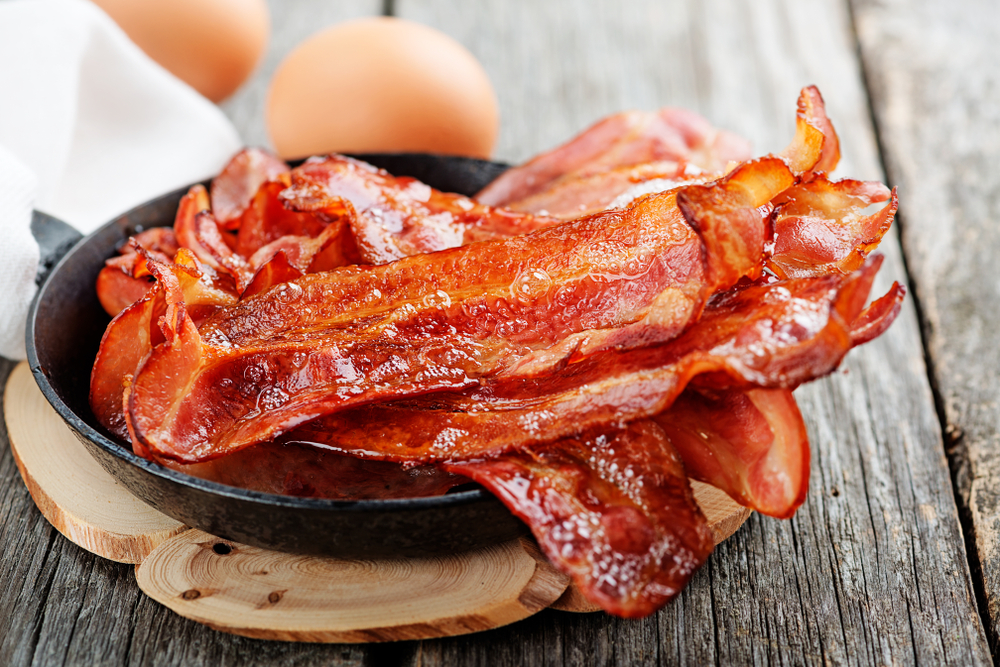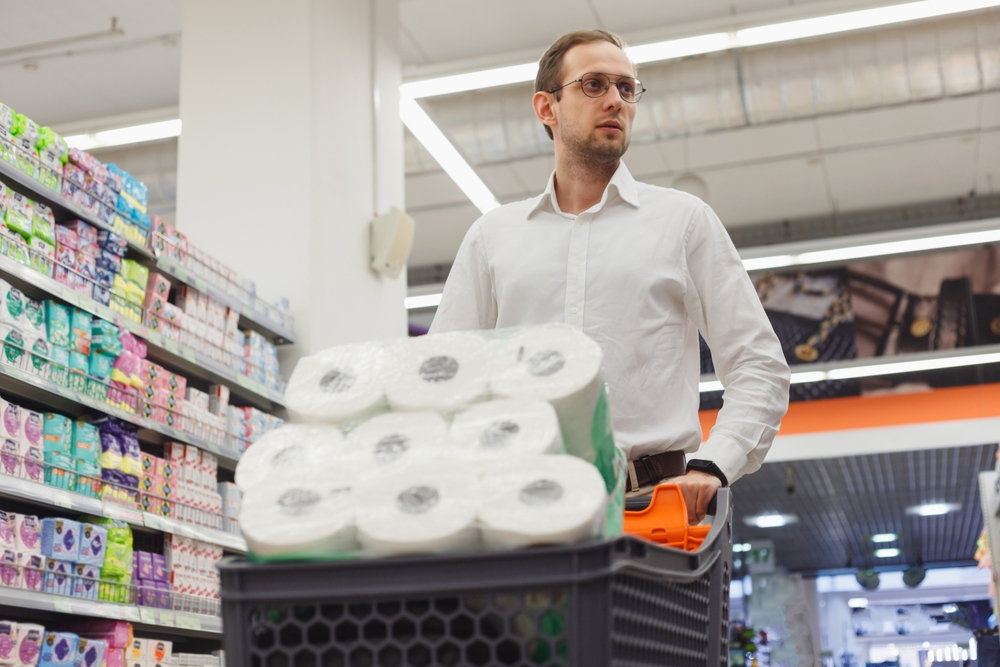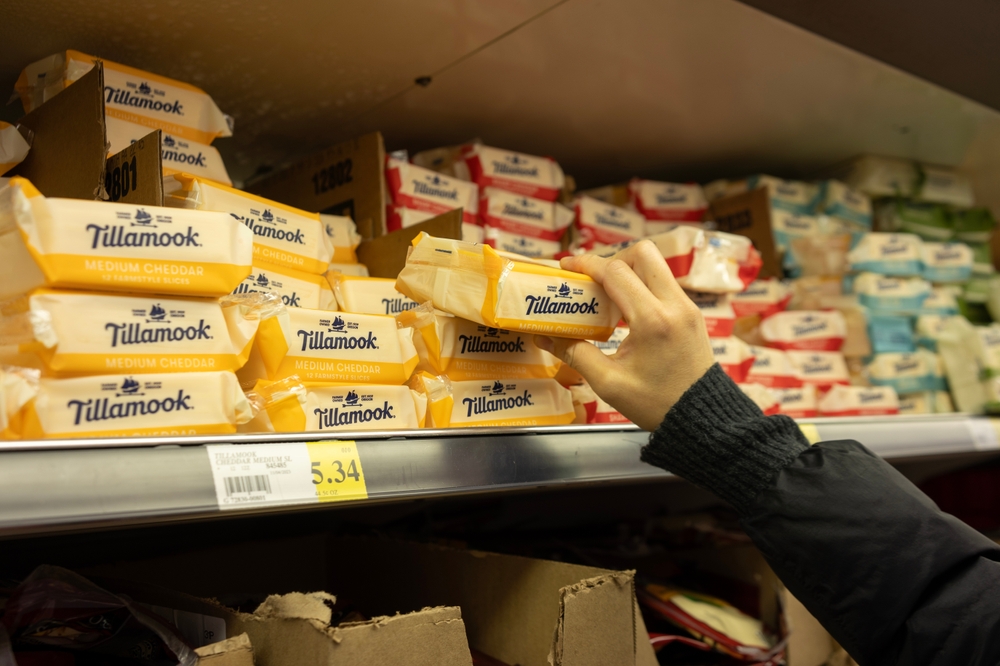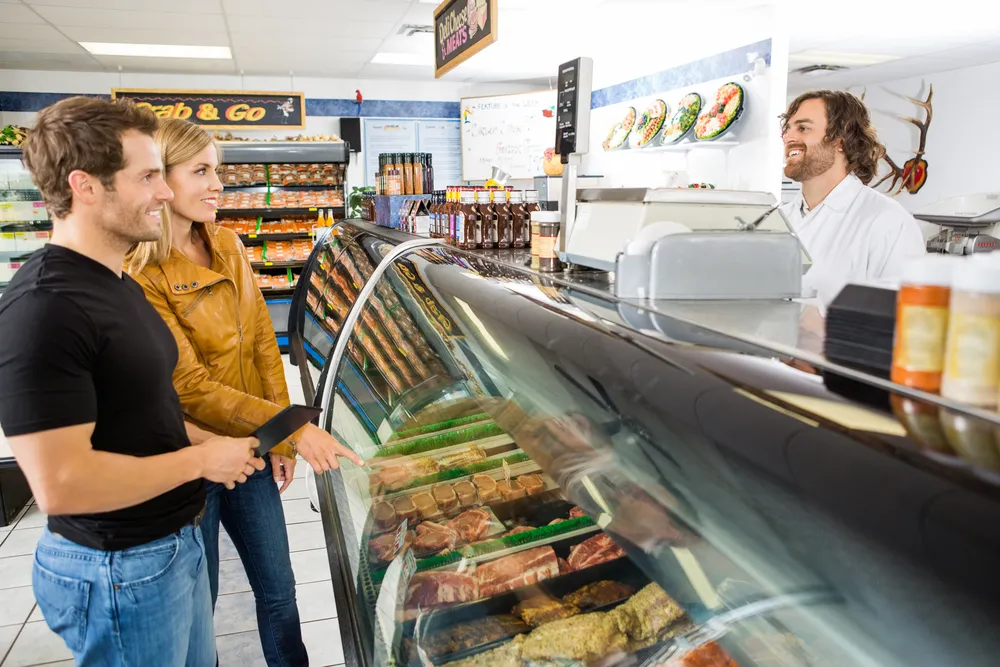In a world where the cost of living seems to be perpetually on the rise, there are certain everyday items in America that have reached shockingly high price points. It’s not just luxury goods or rare collectibles that are seeing inflated values—items that seem mundane and essential are now demanding more from your wallet than ever before. As you navigate through the aisles or scroll through your favorite online retailers, it can feel like you’re trapped in a surreal economic experiment. The reasons are multifaceted, from supply chain breakdowns to market fluctuations, and they affect everyone in subtle yet significant ways. Let’s delve into 14 everyday items whose prices might just leave you second-guessing your next shopping trip.
1. Eggs

Once considered a budget-friendly staple, eggs have seen a surprising surge in price. This increase has left many people wondering if they need to rethink their breakfast options. Avian flu outbreaks and supply chain interruptions are major contributors to this cost hike, according to Dr. Jonathan Smith, an economist at the Food Policy Institute. Retailers have had to adjust their pricing strategies to keep up with the reduced supply and heightened demand. While eggs remain a kitchen essential, their price has become a stark reminder of how volatile the market can be.
Despite their higher cost, eggs continue to be a beloved ingredient across American households. People are increasingly seeking alternative options, like plant-based egg substitutes, to manage their budgets. This shift in consumer behavior might lead to a more competitive market where traditional eggs face new challengers. However, for those unwilling to give up their morning omelet, the increase has become an accepted, albeit frustrating, reality. As you crack open your next egg, know that you’re handling a surprisingly expensive commodity.
2. Laundry Detergent

Laundry detergent is another everyday item that has seen a noticeable price hike. With raw material costs rising and production delays, manufacturers have passed these expenses on to consumers. For many, doing laundry is a non-negotiable chore, but the increased cost of detergent has added an unexpected strain on household budgets. Brand loyalty is being tested as people search for more affordable alternatives or cut back on usage. Yet, the market still holds firm for premium options, showing that convenience and quality sometimes outweigh cost.
Even as people explore generic or eco-friendly detergent options, the price squeeze remains tangible. Some consumers are exploring DIY solutions, making their own detergent at home to save a few dollars. This trend highlights a growing desire for both financial savings and sustainable living solutions. It’s a delicate balance between maintaining cleanliness and managing expenses, a line that many are now forced to tread carefully. Ultimately, detergent’s newfound expense is another example of how basic necessities are becoming more of a financial burden.
3. Bacon

Bacon, once a universally loved breakfast side, has become an unexpectedly costly addition to your grocery list. The combination of increased feed costs and labor shortages in the meatpacking industry have contributed to this price surge. According to the National Pork Producers Council, these factors have created a ripple effect throughout the market, significantly impacting retail prices. Despite its higher cost, bacon remains a popular choice, underscoring its status as a staple of American cuisine. For many, bacon is more than just food—it’s a beloved tradition.
As people grapple with bacon’s rising costs, they are forced to confront their dining habits. Some are turning to turkey bacon or plant-based alternatives to offset expenses while still enjoying a similar taste. This shift indicates a broader trend in the food industry, where cost concerns drive innovation and diversification. Still, the allure of crispy, sizzling bacon is hard to resist, and many choose to absorb the cost rather than forgo it entirely. Each strip now carries a premium price, adding a layer of complexity to your morning routine.
4. Gasoline

Gasoline prices have once again climbed to disconcerting heights, a situation that hits home for millions of commuters. Geopolitical tensions and fluctuating oil markets are key drivers behind this increase, affecting everything from daily errands to long-distance travel. As you watch the numbers climb at the pump, it’s clear that transportation costs are eating into disposable income more than ever before. The unpredictability of gas prices keeps people on their toes, planning trips and commutes with a heightened awareness of their budget. Despite occasional drops, the overarching trend leans towards higher costs, challenging the American way of driving.
With fuel efficiency becoming a paramount concern, the market for electric and hybrid vehicles has grown considerably. People are increasingly weighing the long-term savings of these vehicles against their upfront costs. Meanwhile, public transportation and carpooling options are seeing renewed interest as people search for ways to mitigate fuel expenses. The situation has also reignited discussions about energy independence and the future of fossil fuels. Ultimately, gasoline’s elevated cost serves as a potent reminder of our ongoing reliance on oil and the complexities that come with it.
5. Coffee

For many, a cup of coffee is a daily ritual that has recently become a more expensive habit. The rise in coffee prices is attributed to climate change-induced disruptions in coffee-producing regions, as noted by Dr. Emily Roberts, a researcher at the International Coffee Organization. These environmental challenges have led to reduced yields and increased production costs, subsequently affecting retail prices. Despite the hike, coffee’s popularity remains undiminished, with people viewing it less as a luxury and more as a necessity. The coffee industry, thus, navigates this paradox of increased cost against unwavering demand.
As consumers face higher prices, they are exploring different ways to enjoy their coffee without breaking the bank. Some are brewing their own at home rather than splurging on daily café visits. There’s also a growing interest in exploring different coffee blends that offer a balance between quality and cost. The personal nature of coffee consumption means that people are willing to adjust their habits rather than eliminate them. In this evolving landscape, coffee’s price tag may fluctuate, but its place in daily life remains secure.
6. Diapers

For parents, the rising cost of diapers is an unwelcome addition to the already considerable expense of raising children. Price increases are driven by supply chain disruptions and heightened material costs, placing a significant burden on family budgets. Families find themselves reconsidering their diaper brand choices, often switching to more affordable or generic options. The strain is particularly felt by low-income households, where diaper costs can become a financial hurdle. Efforts to manage this expense are leading to innovative solutions, like cloth diapering, which offers an eco-friendly and cost-effective alternative.
Despite these efforts, diapers remain a non-negotiable necessity for caregivers, ensuring that babies stay clean and comfortable. The market has seen a small surge in demand for cloth diapers, reflecting a broader trend towards sustainable living. Yet, the convenience of disposables maintains their dominance, showing that practicality often trumps cost in the realm of childcare. Diaper banks and community support initiatives have emerged as crucial resources for struggling families. Ultimately, the heightened cost of diapers is a stark reminder of the financial challenges that come with parenting.
7. Beef

The cost of beef has soared, making it a more occasional luxury than a weekday staple for many families. Economic analyst Sarah Thompson of the American Meat Association attributes this to increased feed prices and labor shortages within the meatpacking sector. These factors have significantly influenced market prices, driving up costs for consumers at the checkout line. Despite the steep prices, beef remains a popular choice, demonstrating its integral role in American dining culture. However, the expense has prompted many to reconsider their meat consumption habits.
With beef prices on the rise, plant-based meat alternatives are enjoying a surge in popularity. People are increasingly open to experimenting with these options as a way to reduce grocery costs while maintaining a varied diet. This shift in consumer behavior is pushing the market towards more diverse offerings, giving rise to innovative products and brands. For those who can’t resist the allure of a juicy steak, budgeting has become a more strategic endeavor. Whether through reduced consumption or exploring alternatives, the beef price hike is reshaping dining habits nationwide.
8. Bread

Bread, a quintessential staple in pantries across America, has also seen its price rise. This increase stems from higher costs of wheat and other ingredients, alongside disruptions in the supply chain. As a result, the simple act of making a sandwich or enjoying toast with breakfast is now a more costly affair. The price bump has led people to explore baking their own bread at home, a trend that gained momentum during the pandemic and continues to appeal to those looking to save money. Yet, the convenience of store-bought bread ensures its continued presence in the marketplace.
Despite the price surge, bread remains a fundamental part of the American diet. The increase has sparked conversations about food affordability and the accessibility of basic groceries. People are more conscious of their spending, often opting for sales or bulk purchases to mitigate the impact on their wallets. The rising cost of bread serves as another example of how inflation affects even the most essential items. In a shifting economic landscape, bread’s price tag is a small but significant piece of a larger puzzle.
9. Peanut Butter

Peanut butter, a beloved pantry staple for many households, has experienced a price increase that has left shoppers taken aback. This rise can be attributed to the higher costs of peanuts due to climate issues and increased transportation expenses. Despite being a filling and nutritious option, the elevated price of peanut butter has caused families to reconsider their grocery lists. Some have turned to alternative spreads like almond or sunflower seed butter, though these can also be pricey. The situation highlights the broader trend of rising costs for staple foods, making grocery shopping a more calculated task.
While peanut butter’s popularity remains strong, people are exploring homemade options as a way to cut costs. Making peanut butter at home not only reduces expenses but also allows for customization in terms of flavor and texture. This do-it-yourself approach is gaining traction among those who value both cost-savings and culinary adventures. Meanwhile, the retail market continues to adapt, with some brands offering smaller jar sizes at reduced prices. Despite these shifts, peanut butter’s status as a fixture in American kitchens endures, albeit with a slightly higher price tag.
10. Toilet Paper

Toilet paper, once a forgotten item on shopping lists, has become a symbol of pandemic-induced scarcity and subsequent price increases. The demand surge during lockdowns, coupled with supply chain challenges, has resulted in consistently higher prices. People now approach purchasing toilet paper with a sense of urgency and readiness, often buying in bulk to avoid future shortages. The elevated cost of this everyday item underscores its essential nature, even as people grumble about the extra expense. Despite its mundane purpose, toilet paper’s price hike has become a talking point in discussions about consumer goods and inflation.
As shoppers confront the higher cost of toilet paper, some have sought alternatives like bidets or eco-friendly options. These choices offer long-term savings and align with a growing interest in sustainability. However, the convenience and familiarity of traditional toilet paper make it a difficult habit to break. People continue to adapt their purchasing habits, capitalizing on sales and discounts when available. The increased cost of toilet paper serves as a microcosm of broader economic challenges, reflecting the complexities of supply and demand in the modern world.
11. Cheese

Cheese, a versatile ingredient loved by many, has seen its price climb due to a combination of rising milk costs and logistical hurdles. The dairy industry has been hit hard by increased feed prices, affecting milk production and subsequent cheese processing. For those who enjoy cheese in their meals, this surge represents a significant shift in grocery budgeting. People are being more selective about their cheese purchases, often opting for less expensive varieties or smaller quantities. Despite this, the demand for cheese remains robust, a testament to its enduring appeal in American cuisine.
As cheese prices rise, people are exploring creative ways to stretch their cheese use without sacrificing flavor. Recipes that use cheese sparingly but effectively are gaining popularity, allowing families to enjoy their favorite meals without overspending. Some are turning to cheese alternatives made from nuts or legumes, which can offer a different taste and texture experience. This shift is part of a larger trend towards mindful spending and culinary exploration. In the end, cheese’s costlier status is prompting many to rethink how they incorporate this beloved food into their diets.
12. Chicken

Chicken, often seen as an affordable protein source, has experienced an unexpected price jump. This increase is driven by a combination of factors, including feed costs, labor shortages, and disruptions in processing plants. As a result, households that rely on chicken as a dietary staple are feeling the squeeze on their grocery budgets. People are becoming more strategic in their purchases, opting for whole chickens or less expensive cuts to make their meals stretch further. Despite the uptick in price, chicken remains a staple protein, highlighting its role as a versatile and popular choice.
With chicken prices on the rise, consumers are exploring alternative proteins like beans and lentils as cost-effective substitutes. This shift reflects a broader trend towards plant-based eating, which offers both health and financial benefits. Meanwhile, the poultry industry continues to adapt, with some producers focusing on more efficient production methods to mitigate costs. People are also experimenting with new recipes to make the most out of their chicken purchases, focusing on flavor and creativity. The heightened cost of chicken serves as a reminder of the delicate balance between supply, demand, and consumer habits.
13. Pasta

Pasta, a pantry staple for many, has not been immune to the wave of price increases affecting grocery stores. The cost of wheat, a primary ingredient, has risen due to unfavorable weather conditions and market disruptions. As a result, pasta’s affordability is being challenged, leading people to reconsider their meal planning strategies. The rise in cost hasn’t diminished pasta’s popularity, but it has prompted a shift in buying patterns, with more people turning to store brands or bulk purchases. This change underscores the resilience of pasta as a comforting and adaptable food.
Despite the price increase, pasta remains a go-to option for quick and satisfying meals. People are becoming more creative in their pasta dishes, incorporating a variety of ingredients to enhance flavor and nutritional value. This trend reflects a broader interest in culinary diversity and maximizing the potential of pantry staples. Some are even trying their hand at making homemade pasta, enjoying the process and the potential savings it offers. In a changing economic landscape, pasta’s enduring appeal highlights its status as a cherished component of the American diet.
14. Milk

Milk, a staple in many households, has seen its price increase due to rising feed costs and labor shortages affecting dairy farms. This change has forced families to reevaluate their grocery budgets, particularly those with young children. Despite the increase, milk continues to be a dietary mainstay, essential for everything from cereal bowls to baking. The price hike has led some families to explore plant-based milks, such as almond or soy, which offer varying nutritional profiles and sometimes lower costs. This exploration is indicative of a larger trend towards diversified dietary options.
As people navigate milk’s higher price, they’re also considering their overall consumption and nutritional needs. There’s a growing interest in the benefits of reduced dairy intake, leading some to cut back on milk and explore alternative sources of calcium and vitamins. This shift is part of a broader movement towards mindful eating, emphasizing health and sustainability. Some consumers are also taking advantage of sales and promotions to manage their budgets while still enjoying dairy products. Ultimately, milk’s increased cost is a reflection of broader economic forces shaping the way people approach food and nutrition.
This article is for informational purposes only and should not be construed as financial advice. Consult a financial professional before making investment or other financial decisions. The author and publisher make no warranties of any kind.








